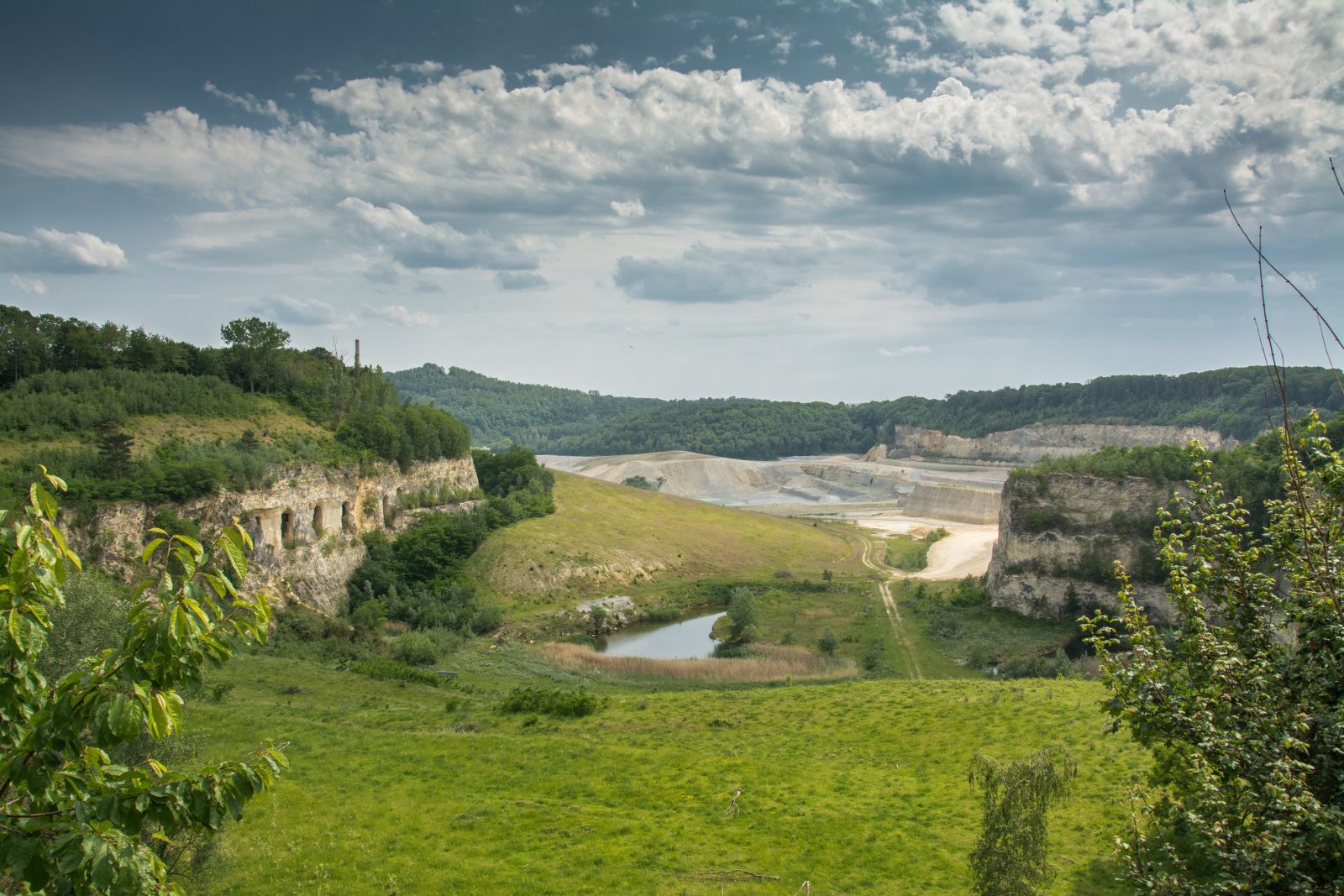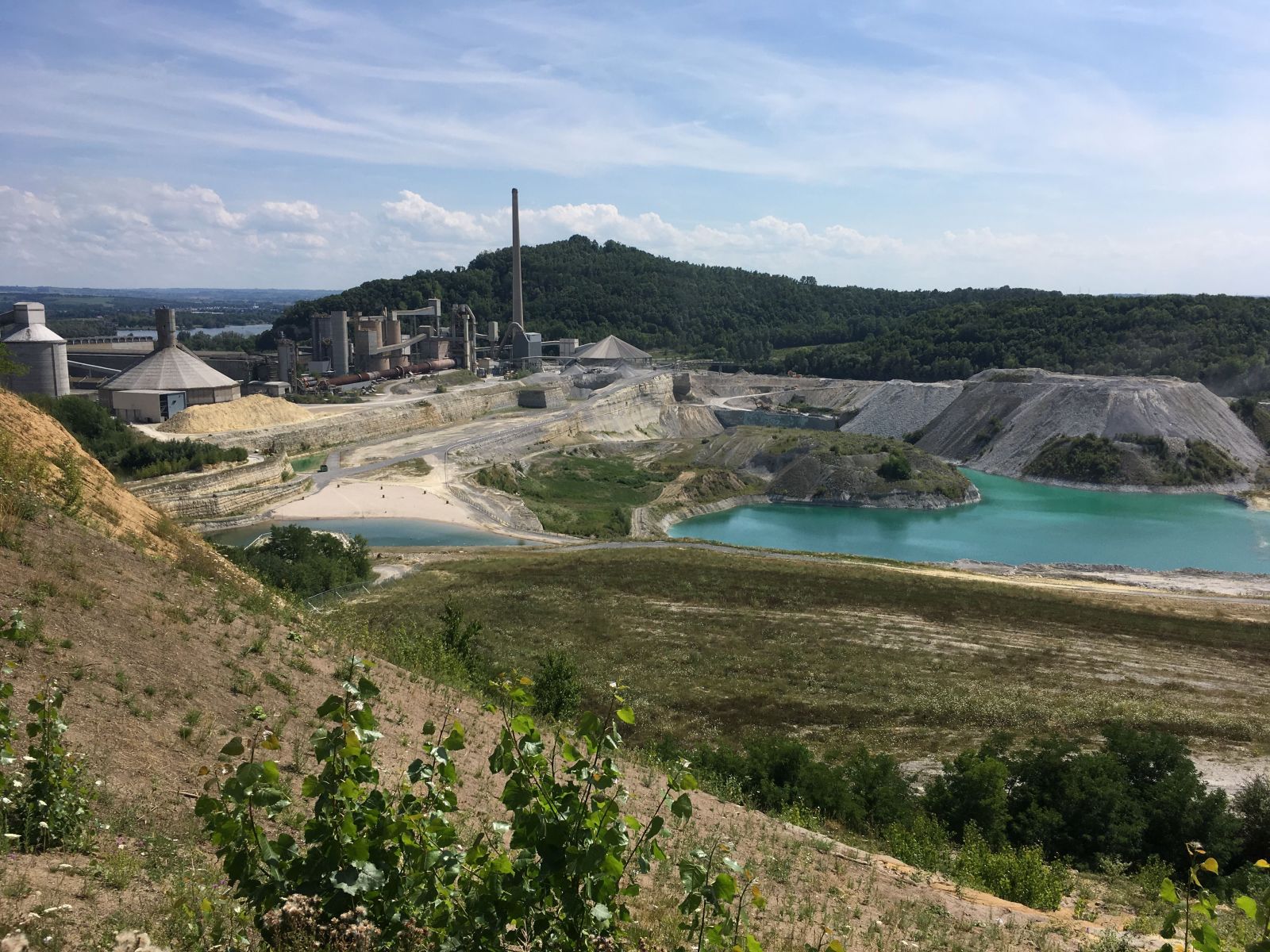Chalk paradise
St. Pietersberg: from chalk quarry to a stunning nature reserve
Words - Toos Hofstede, Images - Natuurmonumenten
In early mornings, when the foggy air covers the chalk grasslands and fens, St. Pietersberg in Maastricht can evoke feelings of solitude and belonging, reminiscent of the highest mountains. For Lysan Wolf and Frans Reijnen from Natuurmonumenten, these are enchanting moments. Grateful to be responsible for the conservation and administration of the area, they are happy to share their knowledge and love for the nature reserve and its inhabitants.
Asked for their favourite spot, they hesitate for a moment. Do they really have to choose just one? The Area Manager (Frans) and Forester Communication and Experience (Lysan) find the question almost impossible. St. Pietersberg is a patchwork of precious places, home to a variety of rare flora and fauna.The Duivelsgrot (Devil’s Cave), once used for the extraction of limestone. The vantage point with its majestic view. The silent corners behind the limestone walls. Fort Sint Pieter, overlooking the valley of the Meuse and the city of Maastricht.
‘Nachtwacht’
For Lysan and Frans, St. Pietersberg is as gorgeous a destination as a place to work. The ‘mountain’, as Frans calls it, is basically a plateau along which the rivers Meuse and Jeker have carved deep valleys on both sides. But there is nothing basic about it. Under ground lies a vast corridor system of old quarries, used to extract limestone since the Middle
Ages. It is a labyrinth filled with chalk wood drawings and sculptures from the workers and visitors who have passed by throughout the ages. During World War Two, the quarries were a refuge for many in hiding alongside Rembrandt’s famous ‘Nachtwacht’.
Microclimate
The middle of the worn platform is home to the former ENCI quarry, where large-scale excavations started in the early 20th century until only a few years ago. Its limestone walls uncover the secrets of millions of years, revealing the fossils of giant Meuse lizards, Mosasaurs, and other animals that used to live in the chalk sea that covered large parts of Europe.
The former seabed is now an extraordinary soil that, combined with height differences and grazing from Mergellandschapen (Marlland sheep), creates a unique habitat. “This area is sheltered”, Lysan says. “Sunlight reflects on the limestone walls. It is warmer and less windy than elsewhere in the region, so you will find species that usually occur further south.”



Enjoyed protection
Exploring the quarry with a guide is entirely possible. Natuurmonumenten is looking into possibilities to open it further to the public and tell the stories of geology, history, flora and fauna. A challenging job, Lysan admits. “We want to give visitors the opportunity to enjoy this magnificent area. But at the same time, it needs our protection to give precious species a chance to develop. We are continually searching for the right balance.”
Natuurmonumenten monitors the variety of plants and animals developing in the quarry area. When do certain animals breed? When does a specific plant flourish? Lysan: “This way, we can anticipate the needs of nature and offer recreation possibilities that can coexist with biodiversity. After all, protection starts with experience. Most people are more willing to defend nature once they experience joy and relaxation within it.”
Hard work
In the meantime, they continually monitor the development of the area in the pursuit of biodiversity. In the Oehoe Valley, provisions like ledges and coves in the chalk wall have helped the eagle owl thrive, growing from one to two couples. They see the rare butterfly species fluttering over the chalk grasslands - bringing in butterfly lovers from all over the country to visit. The bats, breeding in the limestone caves. The orchids, some of which they do not even mention, because they know that some collectors will try to take them home.
Turning a former quarry into a nature reserve as curated as St. Pietersberg is hard work. To some, this may sound contradictory. Why not let nature take its course? “Sure, rewilding could be an option”, Frans says. “But humankind already stepped in. In earlier days, the bigger animals that lived here kept part of the area open. Nowadays, it would all turn into a forest in which fast growing exotic species like butterfly bush and acacia would predominate, while the biodiversity is so rare it would be a shame to lose it.”
Promoting biodiversity
And so Natuurmonumenten adjusts its management to the various vegetation present in the area; chalk grassland, forest, chalk marsh, chalk rocks, pools and streams. A diverse and labour-intensive task, all to maximise on the area’s potential. “Together with volunteers, we remove all exotic plants to help the herbs that belong in a chalk grassland,” says Lysan. They also herd sheep and prune the bushes, because insects need open passages to find their way from one chalk grassland to another.
“If you let sheep graze in one place and poop in another, the soil in the first area will impoverish, while the second gets fertilised”. Lysan explains. “In addition, seeds will stick to the sheep coats, travelling from one place to another. We consciously use this knowledge to give the emerging vegetation and other rare species a shot.”
“Today, the area is home to a mixture of plant species that together attract certain insects, who in turn attract other animals. A single flower is connected to a whole system of rare plants and animals”, says Frans. The water that arises from small wells in the quarry is directed to specific spots to make lime swamps in some places and fens at others. The attractive mixture of dry and wet zones further increases the number of species thriving at St. Pietersberg, like several kinds of toads and salamanders.

Ambassadors
All this would not be possible without the help of volunteers. About 120 locals help Lysan and Frans to protect the nature reserve and create new, appropriate, habitats. It is, Frans believes, ‘the highest density of volunteers in all Natuurmonumenten’, which says a lot about how special this place is, and how beneficial it is to the local community. There are foresters who support the educational tasks of the organisation, volunteers cleaning and maintaining the underground corridors, guides and teams who prune and pick - all ambassadors of Natuurmonumenten and, more specifically, St. Pietersberg.
More help is always welcome. Lysan: “Contributions in time, effort or money are gladly received to keep the area valuable for generations to come. For those not living near St. Pietersberg, there are possibilities to help us and the natural environment in their own neighbourhoods. In the Netherlands, we are always close. And we keep our ambassadors informed with a beautiful magazine.”
Buzzing with life
Step by step, the sleeping beauty that is St. Pietersberg awakens. In some spots, this still takes patience. Frans: “In certain areas, we have to wait until phosphate and nitrogen levels drop.” ‘Green deserts’, Lysan calls them: meadows where only grass can grow. “You might think ‘green is good, right?’ But in these meadows, you will hardly find any insects or birds.”
A healthy meadow is buzzing with life. “You will notice flowers and several kinds of bees. That is what we aim for: a rich pallet of species with quarries and chalk grasslands connected to similar areas in the Netherlands and Belgium. An area where people can enjoy the diversity of plants and animals, and where nature can simply be. Because it not only has value for us, but also for itself. And it all starts with the soil.”

Getting there
St. Pietersberg is located in the South of Maastricht, on the West bank of the River Meuse. You can enter the area either from Fort St. Pieter in the North or via Chalet d’Observant and Bistro Hoffmanni in the South. Both entrances offer parking. St. Pietersberg is the start or end point of the Pieterpad, a long-distance trail from the nature reserve to the very North of The Netherlands, and the Dutch Mountain Trail through the South Limburg hills.




